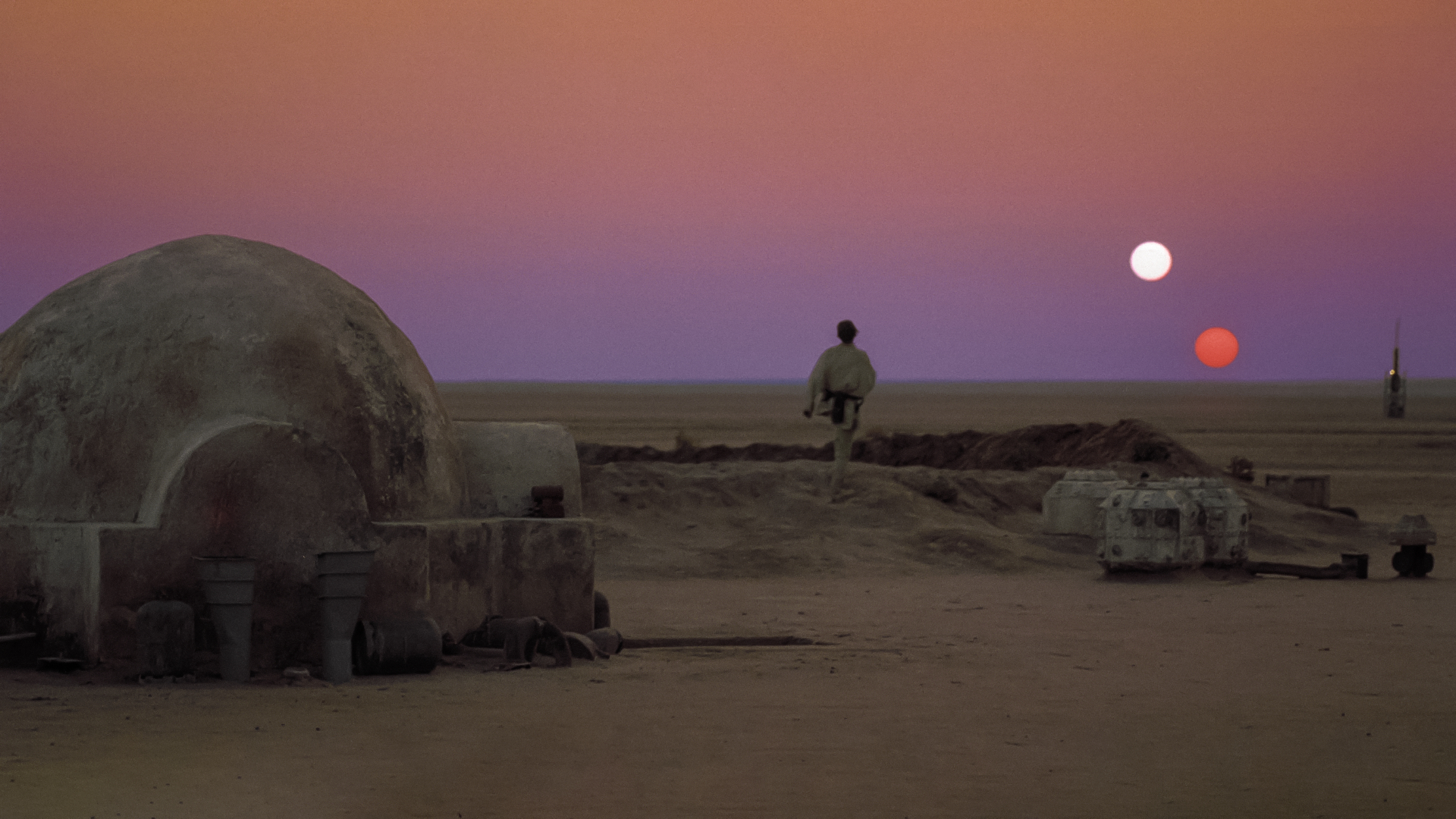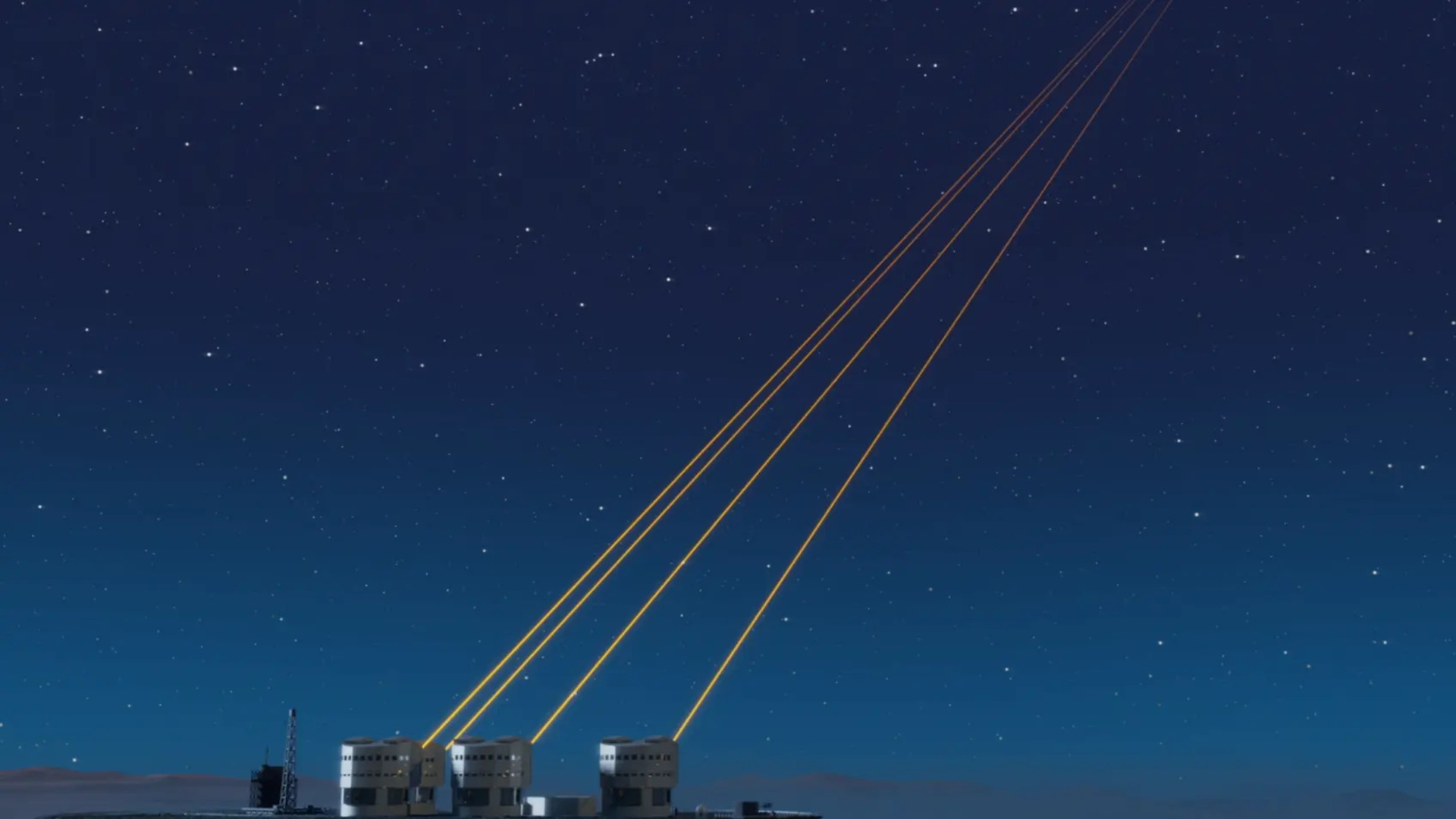Scientists discover 3 Earth-size exoplanets that may have double sunsets — like Tatooine in Star Wars
"This makes TOI-2267 the first binary system known to host transiting planets around both of its stars."

Using NASA's planet-hunting spacecraft TESS (Transiting Exoplanet Survey Satellite), astronomers have discovered three Earth-size worlds orbiting around twin stars.
It has previously been theorized that binary systems are hostile to the formation of complex planetary arrangements, meaning this discovery could change how we think about planet formation and the stability of worlds after formation. What makes the planets of TOI-2267 even more exciting is they also break some previously held exoplanet records.
Furthermore, the binary star nature of this system, located around 190 light-years from Earth, means these exoplanets could experience dual starsets reminiscent of the famous scene in Star Wars: A New Hope in which Luke Skywalker gazes dreamily out at the stars of his homeworld, Tatooine.
"Our analysis shows a unique planetary arrangement: two planets are transiting one star, and the third is transiting its companion star," Sebastián Zúñiga-Fernánde, study team member and a researcher at the University of Liège (ULiège), said in a statement.
"This makes TOI-2267 the first binary system known to host transiting planets around both of its stars."
Record breakers!
Binary star systems come in a range of shapes, sizes and arrangements. TOI-2267 is a "compact binary." This means the stars that comprise this system orbit each other in close proximity. This closeness causes gravitational instability that existing planetary formation models have suggested should result in an environment unsuitable for planet formation.
Yet, planets have formed in TOI-2267.
Breaking space news, the latest updates on rocket launches, skywatching events and more!
"Our discovery breaks several records, as it is the most compact and coldest pair of stars with planets known, and it is also the first in which planets have been recorded transiting around both components," Francisco J. Pozuelos, study team co-leader and a researcher at the Instituto de Astrofísica de Andalucía (IAA-CSIC), said in a statement.
Pozuelos and colleagues got their first hints about these three distant Earth-like worlds when they examined data from TESS using their detection software, SHERLOCK. This early indication of planets in the TOI-2267 system prompted the team to get ready for more observations with several other observatories. This included SPECULOOS, a network of robotic telescopes comprised of SPECULOOS Southern Observatory at the Paranal Observatory in Chile and SPECULOOS Northern Observatory at the Teide Observatory in Tenerife, and a pair of telescopes in Belgium called TRAPPIST (Transiting Planets and Planetesimals Small Telescope).
These facilities are specially adapted to investigate small exoplanets around cool and faint stars, meaning they were vital in allowing the team to characterize TOI-2267, and thus, discovering its surprising nature.
"This system is a true natural laboratory for understanding how rocky planets can emerge and survive under extreme dynamical conditions, where we previously thought their stability would be compromised," Pozuelos said.
The queries raised regarding planet formation by this system could be an investigation that is right in the wheelhouse of the James Webb Space Telescope (JWST) as well as the next generation of ground-based observatories. These instruments should allow astronomers to precisely measure the masses, densities and possibly even the atmospheric chemistry of the newly discovered planets of TOI-2267.
"Discovering three Earth-sized planets in such a compact binary system is a unique opportunity," Zúñiga-Fernández concluded. "It allows us to test the limits of planet formation models in complex environments and to better understand the diversity of possible planetary architectures in our galaxy."
The team's research was published on Friday (Oct. 24) in the journal Astronomy & Astrophysics.

Robert Lea is a science journalist in the U.K. whose articles have been published in Physics World, New Scientist, Astronomy Magazine, All About Space, Newsweek and ZME Science. He also writes about science communication for Elsevier and the European Journal of Physics. Rob holds a bachelor of science degree in physics and astronomy from the U.K.’s Open University. Follow him on Twitter @sciencef1rst.
You must confirm your public display name before commenting
Please logout and then login again, you will then be prompted to enter your display name.
